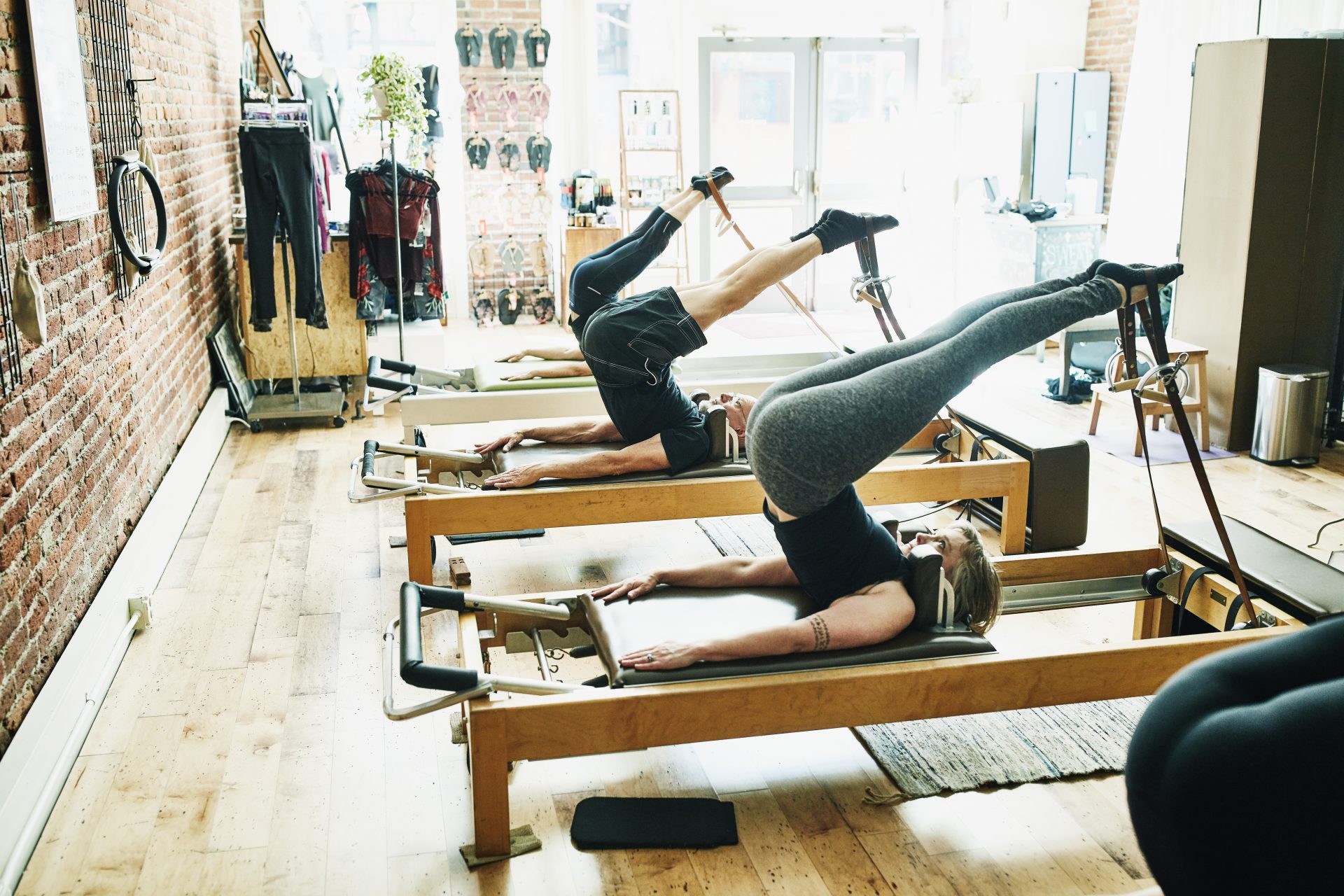Reformer pilates is more than just a fitness trend – it’s the antidote to lockdown living. Here’s all the benefits of the strengthening and stretching workout.
Have you raced back to the gym to get your hands on barbells, dumbbells and kettlebells now that lockdown is over? After many months of training at home, adding in these pieces of kit is an amazing way to mix up your workout, challenge your body and build functional strength. But why stop there?
When classes re-open on 17 May, you’ll be able to get your hands on some more obscure kit. The most talked about of all has to be the reformer. To the uninitiated, a reformer is the machine used during reformer pilates – and it looks pretty intimidating. Don’t worry though – it’s not actually an instrument of torture. Instead, it’s a hugely effective way to upgrade your bodyweight training.
You may also like
Barre workout: why everyone fell in love with the pilates and ballet fusion during lockdown
Reformer pilates isn’t a new workout by any means. It was actually developed before the more accessible mat pilates by Joseph Pilates. What we now know as a trendy workout began by attaching straps to hospital beds during World War I to rehabilitate injured soldiers, and led Pilates to create the reformer machine. This includes a carriage you lie or sit on, attached by wheels to the frame, and pulleys, ropes and strings that you use to glide your body across the reformer.

Is reformer pilates a good workout?
Pilates is known for being a full body strengthening workout – reformer pilates takes that one step further. “Using a reformer adds resistance but also turns your pilates workout into eccentric contraction training,” says Emma Kerr, reformer pilates teacher from Spirit and Soul. This is where the muscle is loaded during the lowering phase of the movement, as your muscles are lengthening, which has actually been shown to build greater strength without huge impact or force on the muscles and joints – perfect for building a body that can support your lockdown running habit.
“Because you’re supported by the reformer, there’s no weight bearing. This makes it really safe for the joints and helps to promote stability,” says Emma. “Reformer pilates is all about control, performing repetitive movements very slowly.”
You may also like
Strength training: 4 simple core strengthening pilates exercises for beginners
The reason that’s so lusted for after lockdown? “The one thing that I notice changing more than anything in my clients is their posture and a reduction in lower back pain,” says Emma. After a year stuck at home, those words sound pretty dreamy. It works to improve alignment by targeting the small, stabilising muscles in the abdominals, glutes and back that aren’t usually activated. “You can really feel every individual muscle switching on in a way that you can’t with other types of exercise,” says Emma.
And let’s be honest: going to a class, using kit that we could never get at home and having the full attention of an instructor sounds like the perfect way to mix up a mundane workout routine. “Pilates isn’t spiritual in the way that yoga is, but it is all about mind and body connection. Freeing up space in your body by standing tall does impact your mental wellbeing, and you can’t get distracted in a reformer class. It’s an hour to focus on what’s happening in your body without distraction,” adds Emma.

Is reformer pilates suitable for beginners?
You don’t need to shy away from reformer pilates if you’re coming out of lockdown having barely worked your core for a year. One of the benefits to a reformer pilates class is that they tend to be small, with a teacher who can pay you full attention. “It can be tricky to learn, and you’ll have to be properly taught how to use the machines, but one of the great things about reformer pilates is that you are never left to your own devices,” says Emma.
However, it’s not recommended that beginners – or even experienced reformer users who are returning after a while away – jump in too quickly. “I always recommend starting slowly as you are putting the body under a lot of tension. I wouldn’t say people should do more than two classes a week at the beginning,” says Emma. “Consistency is always key, and it takes weeks to feel and see results from any type of training.”
And if you don’t have yourself down as a pilates kind of person, rest assured that you’ll benefit from the practice. Thanks to it’s ability to strengthen and stretch, “pilates supplements every type of exercise,” says Emma. So whether you’re looking to improve your running endurance, get back to your pre-lockdown squatting strength or find a new way of training outside of the house, keep reformer in mind. It’s only a couple of weeks to go until 17 May.
Follow @StrongWomenUK on Instagram for the latest workouts, delicious recipes and motivation from your favourite fitness experts.
Images: Getty
Source: Read Full Article
